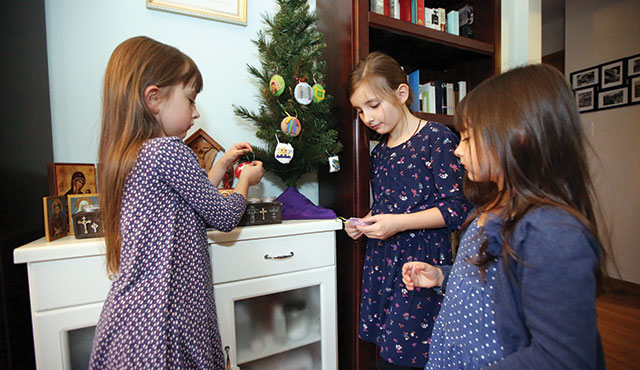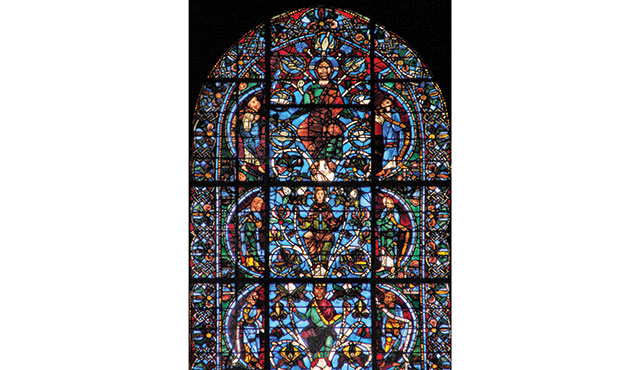The Church rarely, if ever, does anything without intentionality. Over its 2,000-year history, liturgy, practices, vestments and images, are rich with meaning that point to greater truths. It is how the Church teaches and leads the faithful to truth.
Modern Catholics often miss the point of the process that is meant to guide the faithful through a liturgical journey of faith. From a Catholic viewpoint, our faith is like a river that leads us on a journey that only ends at our eternal home.
Advent is one of those times that can be easily skipped over in the rush to Christmas. It’s easy to forget that the time of waiting, over millennia of old testament stories and characters, is as much a part of the Christmas story as the birth of a divine child in a manger.
Advent begins the Sunday following the November 30th feast of St. Andrew the Apostle. The intention – because St. Andrew, brother of St. Peter, is considered the first disciple. In the Greek Orthodox tradition St. Andrew is referred to as the Prōtoklētos or the first called. So it makes sense that his feast day marks the beginning of the liturgical season of preparation for the coming of the long-promised messiah.
Advent is the beginning of our liturgical year, and as such a good time to review the people and events that led up to the moment of Christmas.
According to Katie Dawson, director of Parish Evangelization and Faith Formation for the Diocese, “We don’t have to teach children to anticipate Christmas, but we do need to help them stay in the moment. It is a time where we reflect on the time of waiting for God to send his people the savior.”
Early Christians didn’t celebrate Christmas as a liturgical season, aside from a feast day celebrating Christ’s birth. The focus was on Easter – and the fulfillment of salvation. According to Catholic Answers, preparation leading up to Christmas didn’t occur until the late fourth century. “According to Duchesne [Christian Worship (London, 1904), 260], it (Christmas) was celebrated throughout the whole Church, by some on December 25, by others on January 6. Of such a preparation we read in the Acts of a synod held at Saragossa in 380, whose fourth canon prescribes that from the seventeenth of December to the feast of the Epiphany no one should be permitted to absent himself from church.”
Over the centuries the time before Christmas has escalated to something close to a frenzy and far removed from its religious significance.
So how can we make Advent a mindful and enriching time?
Dawson suggests that we redirect ourselves and especially our children to pay attention to the events leading up to Christmas, and its meaning. “In our family we have a tradition of the ‘Jesse Tree,’ which traces the genealogy of Jesus through 25 ornaments with symbols from Old Testament themes. Each day a new ornament is added to the tree, offering an opportunity for discussion. We also prepare food or activities that relate to the story.”
There are many sources for homemade or pre-made Jesse Tree kits. Catholicculture.org has do-it-yourself instructions, as does Loyola Press. There are also multiple vendors who sell pre-made ornaments, especially on sites such as Etsy.
The Jesse Tree concept is not new. Many of the great cathedrals of the middle ages have Jesse tree stained glass windows, most notably the Chartres Cathedral in France which dates to 1260.
Jesse, who was the father of King David, is considered the first ancestor in Jesus’s family tree. Every day from December 1, a new symbol tied to a bible verse is added. It begins with Creation, Gn 1:1-31 and symbols that could include the sun, moon, stars, animals and Earth. The next day is Adam and Eve, then the Fall of man, Noah, Abraham and on until Christmas and the birth of Jesus. The ornaments can be placed on the family’s Christmas tree, or more often, a smaller table top tree is used.
Dawson says her family uses each day as a theme and plans activities that correspond to the ornament for the day. In addition to the Jesse Tree, there are a number of saint’s days in December that can be incorporated into the advent activities. St. Nicholas (Dec 6), St. Juan Diego (Dec 9), Our Lady of Guadalupe (Dec 12) and St. Lucy (Dec 13) all provide opportunities to incorporate a little fun and learning into the season.
It still may be difficult to keep the little ones (and the big ones) focused on the significance of the season and the centuries of history that all point to Christmas, but putting a little substance into the season will have its own rewards along the way.


